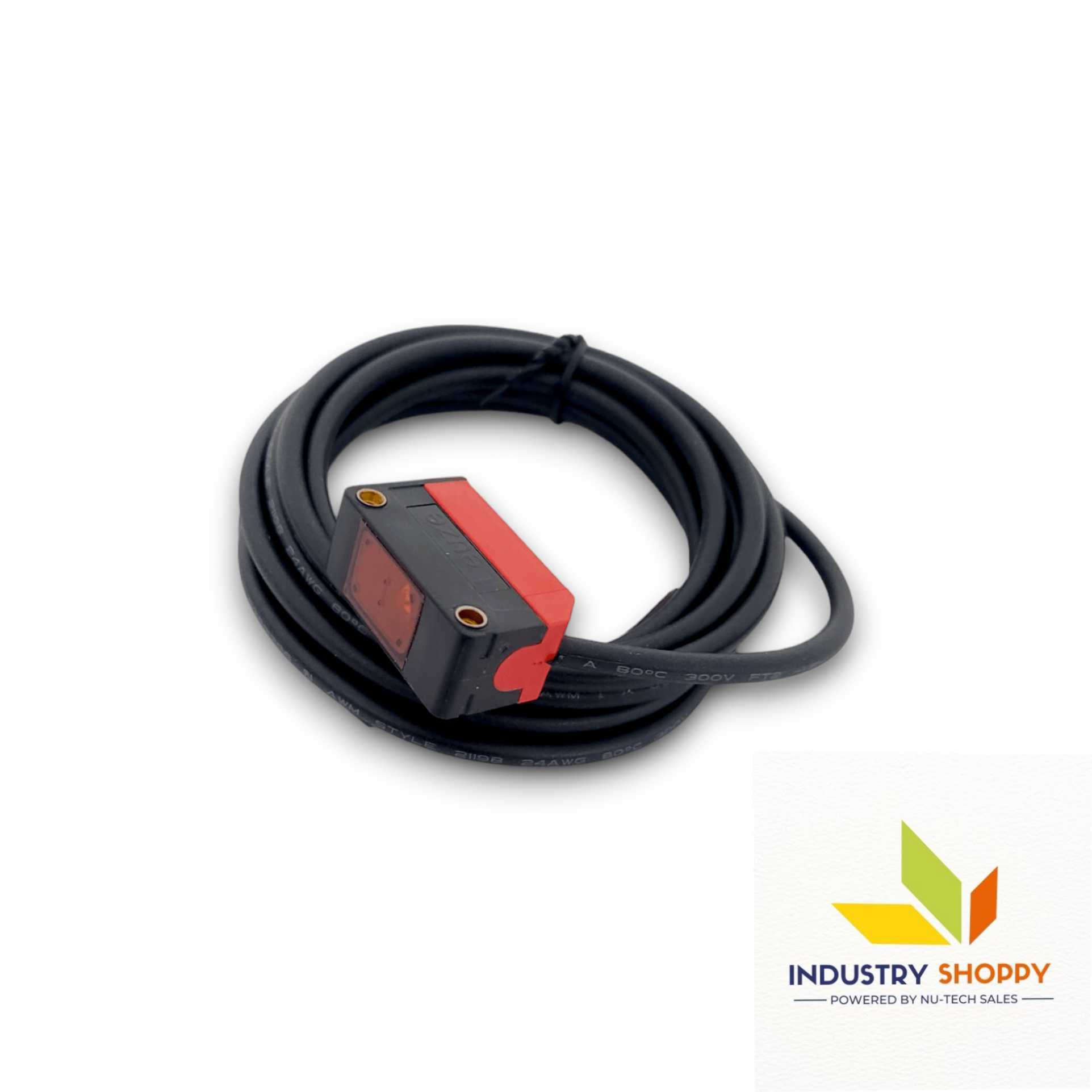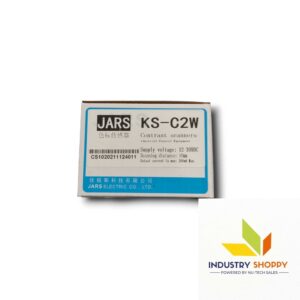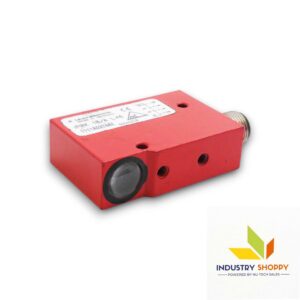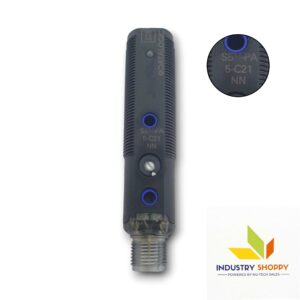Leuze PRK5/4P Photoelectric Sensor
24 in stock
- Brand : Leuze
- Supply Voltage : 10 – 30 V, DC
- Open-circuit current : 0 … 15 mA
- Output 1 switching element : Transistor, PNP
- Type of connection : Cable
₹2,530.00 ₹3,450.00 GST Extra
24 in stock
Leuze PRK5/4P Photoelectric Sensor
The Leuze PRK5/4P Photoelectric Sensor Part No. 50117705 is a cutting-edge solution for industrial automation. The Series 5 sensor operates on the reflection principle within a guaranteed range of 0.02 to 4.5 meters. It utilizes a red LED light source with a wavelength of 620 nm and employs a PNP transistor for both light and dark switching.
The device has a switching frequency of 500 Hz, a response time of 1 ms, and a readiness delay of 300 ms. It outputs signals, requires a 10-30 V DC power supply, and features a compact design with dimensions of 14 mm x 32.5 mm x 20.2 mm. The sensor is connected via a 2000 mm cable with a PUR sheath, and it can operate in temperatures ranging from -40 to 60 °C.
Our engineers actively inputted all the required details of this item in accordance with the datasheet. Nevertheless, it’s imperative to recognize that errors may arise during this process. Despite our sincere efforts, it’s important to remain cautious. Nonetheless, inaccuracies can still occur. All trademarks and trade names used on this site are the property of their respective owners. They are used solely for identification purposes and do not imply any endorsement or affiliation with our company.
IndustryShoppy.in is your one-stop destination for all industrial automation needs. With a vast array of products including sensors, HMIs, PLCs, and more, we cater to diverse industries with top-quality solutions. Our user-friendly platform ensures a seamless shopping experience, while our commitment to reliability and customer satisfaction sets us apart. Explore our comprehensive range and elevate your operations with IndustryShoppy.in today!
| Weight | 160 g |
|---|---|
| Dimensions | 15 × 10 × 7 cm |
| Brands | Leuze |
| Condition | New |
| Warranty | 12 Months |
| Country of Origin | Malaysia |
| Brand | Leuze |
| Model No. | PRK5/4P |
| Series | 5 |
| Operating principle | Reflection principle |
| Operating range | 0.02 ... 4.5 m, With reflector TK(S) 100x100 |
| Operating range | Guaranteed operating range |
| Operating range limit | Typical operating range |
| Operating range limit | 0.02 ... 6 m, With reflector TK(S) 100x100 |
| Light source | LED, Red |
| Wavelength | 620 nm |
| LED group | Exempt group (in acc. with EN 62471) |
| Supply voltage UB | 10 ... 30 V, DC, Incl. residual ripple |
| Residual ripple | 0 ... 15 %, From UB |
| Open-circuit current | 0 ... 20 mA |
| Switching element | Transistor, PNP |
| Switching principle | Light switching |
| Switching element | Transistor, PNP |
| Switching principle | Dark switching |
| Switching frequency | 500 Hz |
| Response time | 1 ms |
| Readiness delay | 300 ms |
| Function | Signal OUT |
| Voltage supply | 2000mm |
| Type of connection | Cable |
| Cable length | 2,000 mm |
| Sheathing material | PUR |
| Cable color | Black |
| Number of conductors | 4 -wire |
| Wire cross section | 0.2 mm² |
| Dimension (W x H x L) | 14 mm x 32.5 mm x 20.2 mm |
| Housing material | Plastic |
| Plastic housing | ABS |
| Lens cover material | Plastic |
| Housing color | Black Red |
| Type of display | LED |
| Ambient temperature, operation | -40 ... 60 °C |
| Ambient temperature, storage | -40 ... 70 °C |
| Degree of protection | IP 67 |
| Protection class | III |
| Certifications | c UL US |
| Standards applied | IEC 60947-5-2 |













Reviews
There are no reviews yet